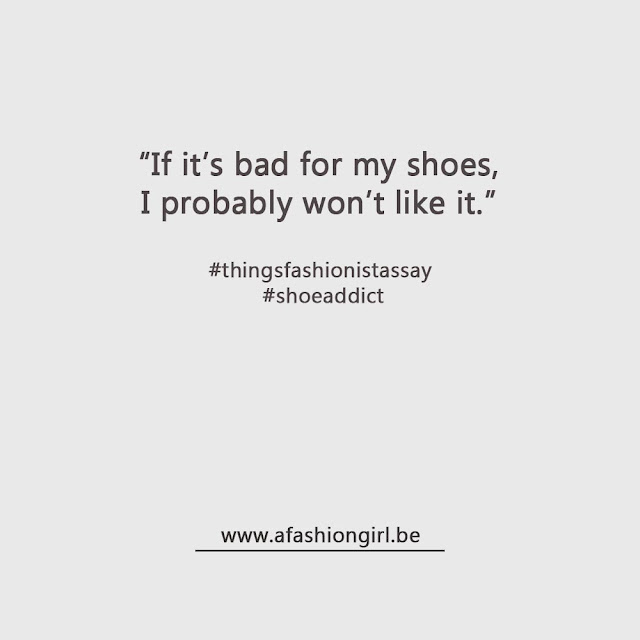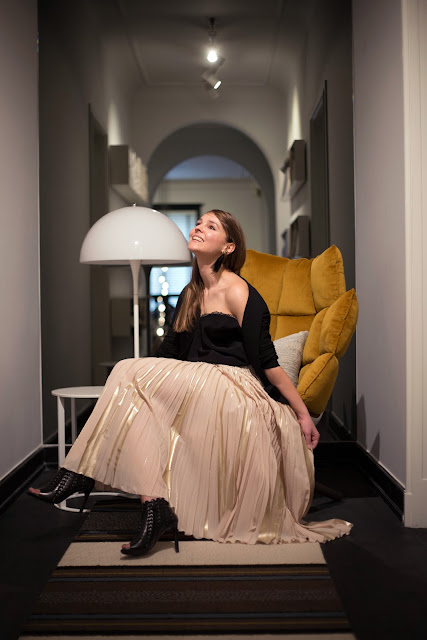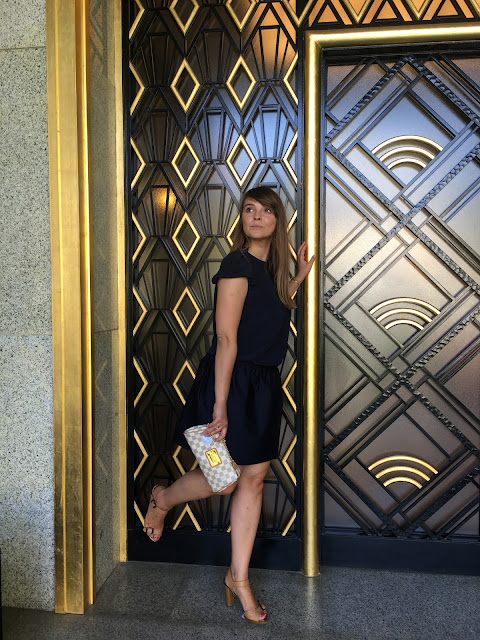Only today left to visit 'Across Japan' at Modemuseum Hasselt
 |
| © a fashion girl |
It seems like all I do lately is visiting exhibitions about fashion. Sometimes just before they close, like the exhibition Across Japan at the Modemuseum in Hasselt. If you also want to have a look, you have to be fast because after today (Sunday September 3rd) the exhibition closes its doors. If you have no plans today, I advice you to go marvel at the beautiful creations and to have a drink and a bite to eat in 'The capital of taste' afterwards. I recommend L'Aperi Vino.
 |
| © a fashion girl |
De expo Across Japan onderzoekt de relatie tussen de avantgarde-ontwerpers uit Japan en hun invloed op de westerse mode en ontwerpers. Creaties van John Galliano staan bijvoorbeeld naast ontwerpen van Maison Martin Margiela en Yohji Yamamoto en Issey Miyake.
The exihibition Across Japan focuses on the relation between the Japanese avant-garde designers and their influence on western fashion and designers. Creations by for example John Galliano and Maison Martin Margiela are displayed next to those of Yohji Yamamoto and Issey Miyake.
 |
| © a fashion girl |
The western fascination with Japan is nothing new. There already were kimono inspired clothing pieces in the 17th century. But in the last quarter of the 20th century Miyake, Yamamoto and Kawakubo were responsible for a true revolution in the fashion world.
 |
| © a fashion girl Kawaii |
Vier thema's / Four themes
De expo verkent vier thema's die typisch zijn voor Japanse of Japans geïnspireerde mode.
- Wabi-sabi
Dit culturele begrip staat synoniem voor de schoonheid van de imperfectie, vergankelijkheid, eenvoud, authenticiteit, onregelmatigheid en suggestiviteit. In de mode vertaalt zich dat in deconstructivisme (uitgerafelde randen, scheuren, ongelijkmatige zomen...). Deze benadering, die werd geïntroduceerd door Yamamoto en Kawakubo begin jaren 80, steekt sterk af tegen de westerse glamour van bijvoorbeeld Versace en Mugler. - Kawaii
Deze trend uit de Japanse straatmode heeft ook zijn weg gevonden naar de catwalk. De stijl wordt gekenmerkt door schattigheid (denk aan Hello Kitty), overdrijving, sierlijkheid en een verontrustend romanticisme. - Gi-jutsu
Al sinds het begin hechten Japanse ontwerpers veel belang aan textiel. Hun ontwerpen vertonen een rijkdom aan textuur en innovatieve materialen. Issey Miyake is op dat vlak een grote vernieuwer, zoals met zijn beroemde plissétechniek. De Nederlandse ontwerpster Iris Van Herpen deelt deze voorliefde voor texturen en materialen. - Ma
Ma staat voor de ruimte tussen twee structurele delen - hier te zien als de ruimte tussen lichaam en kledingstuk. In tegenstelling tot klassieke westerse mode, die nauw aansluit om het lichaam, kiezen Japanse ontwerpers voor ruime creaties die het lichaam verhullen. Het ontwerpersduo Viktor & Rolf laat zich hierdoor inspireren.
***
The exhibition explores four themes, which are typical for Japanese or Japanese inspired fashion.
- Wabi-sabi
This cultural notion is a synonym for the beauty of imperfection, transience, simplicity, authenticity, irregularity and suggestivity. In fashion this translates to deconstructivism (frayed edges, tears, irregular seams...). Yamamoto and Kawakubo introduced this approach in the early 80's when it contrasted heavily with the glamour of for example Versace and Mugler. - Kawaii
This trend from Japanese streetstyle has found its way to the runway. The style is characterized by cuteness (think Hello Kitty), exaggeration, gracefulness and a disconcerting romanticism. - Gi-jutsu
From the early beginning Japanese designers were focused on textile. Their designs show a richness when it comes to textures and innovative materials. In that regard Issey Miyake is an innovator, with for example his famous plissé technique. The Dutch designer Iris Van Herpen shares this love for material, textures and innovation. - Ma
Ma stands for the space between two structural elements - here: the space between the body and the piece of clothing. Contrary to classic western fashion, which follows the body closely, Japanese designers opt for wide creations which conceal the body. Designer duo Viktor & Rolf are also influenced by this concept.
 |
| © a fashion girl Gi-jutsu - Yamamoto dress |
 |
| © a fashion girl Gi-jutsu - Yamamoto and Ann Demeulemeester |
 |
| © a fashion girl Gi-jutsu - Iris Van Herpen |
The exhibition closes after today. If you don't have any plans today, I recommend a visit. If afterwards you want to experience more of Japan, you can visit the Japanese garden in Hasselt.
 |
| © a fashion girl Gi-jutsu |
 |
| © a fashion girl Ma - couture collection 'Zen Garden' by Viktor & Rolf |
 |
| © a fashion girl The two pieces on the right are my absolute favourites - by Josep Font/Delpozo. |
All information on www.modemuseumhasselt.be.







Reacties
Een reactie posten